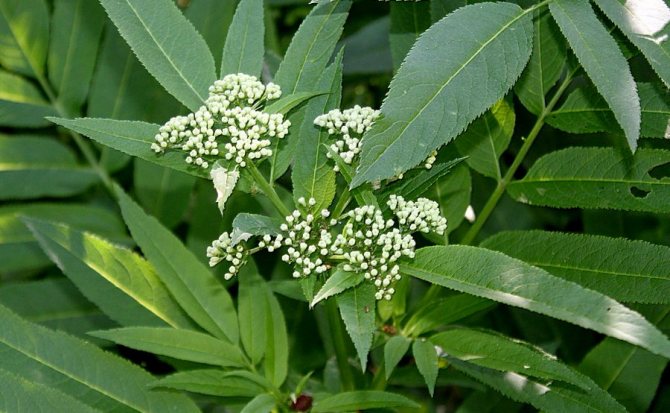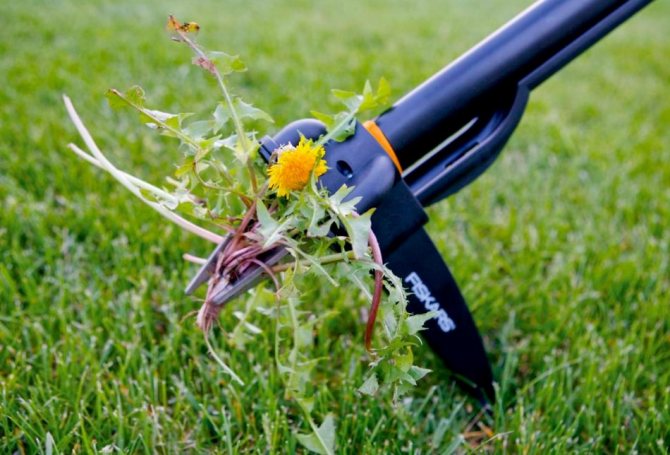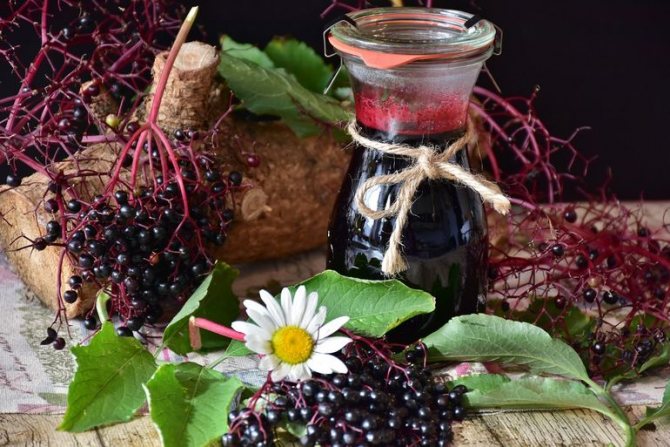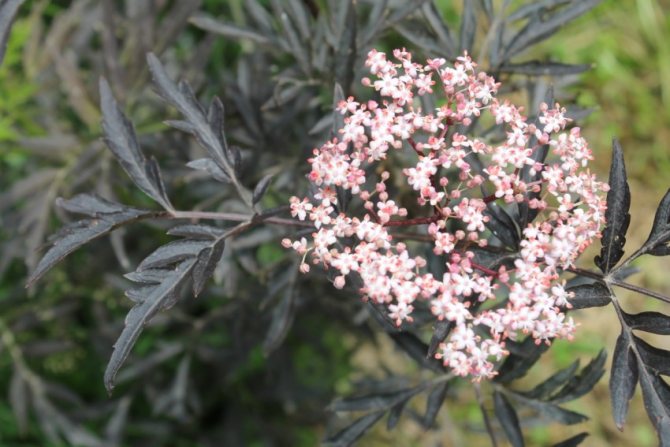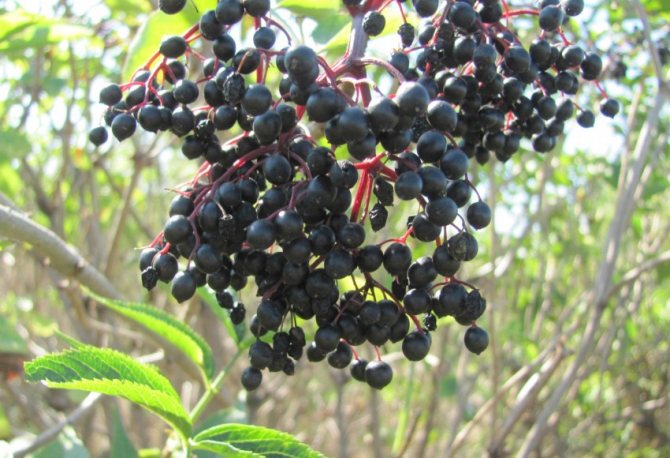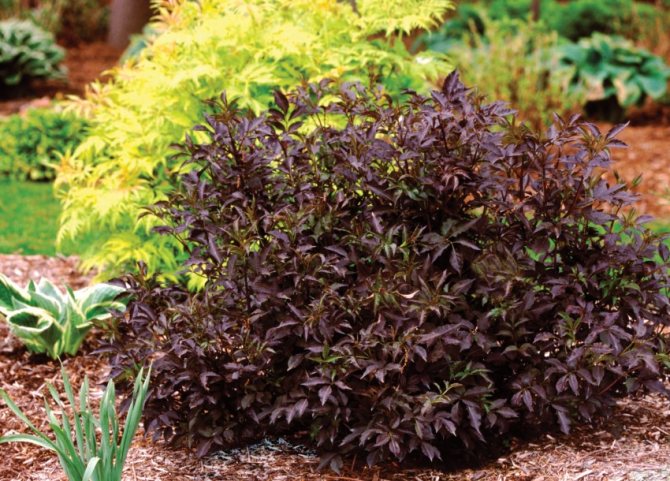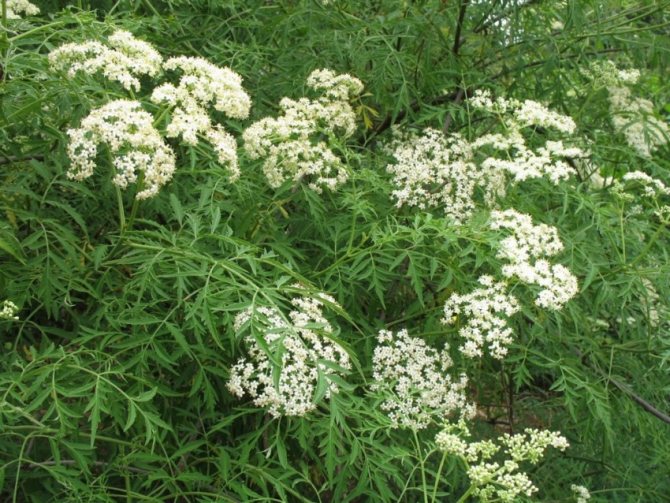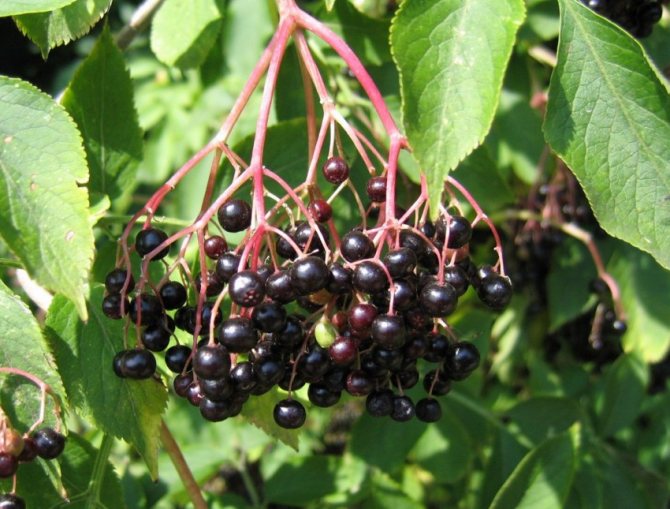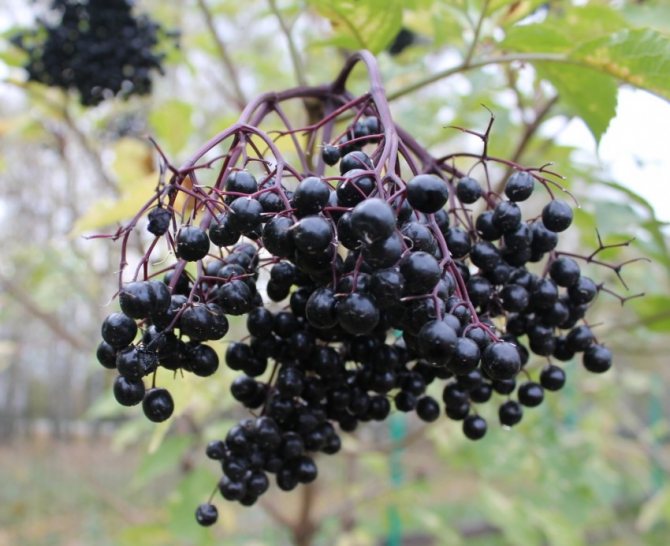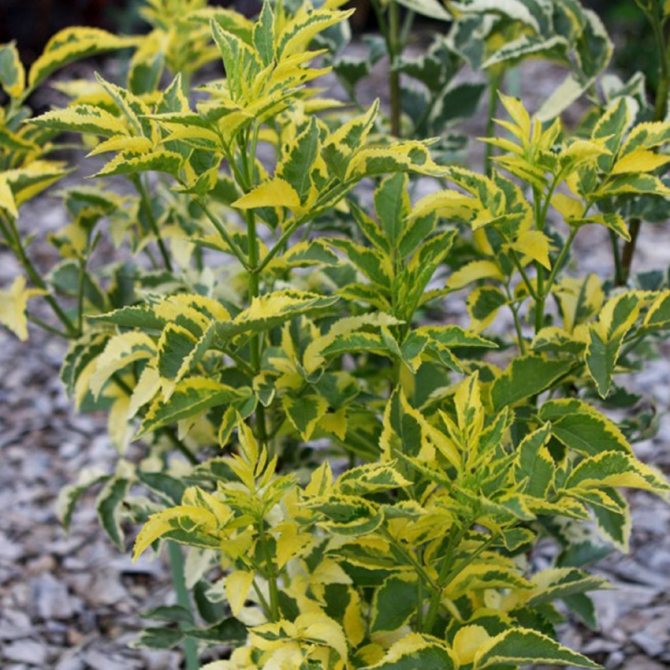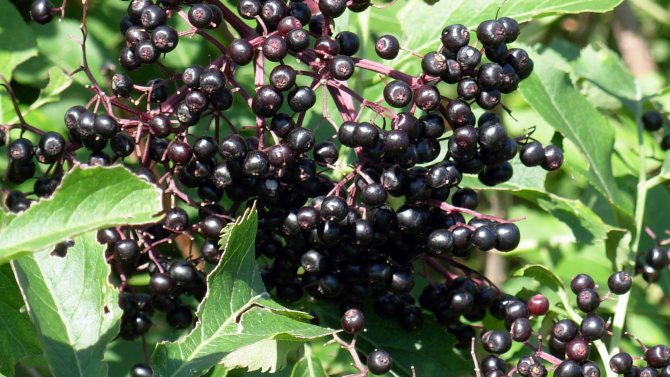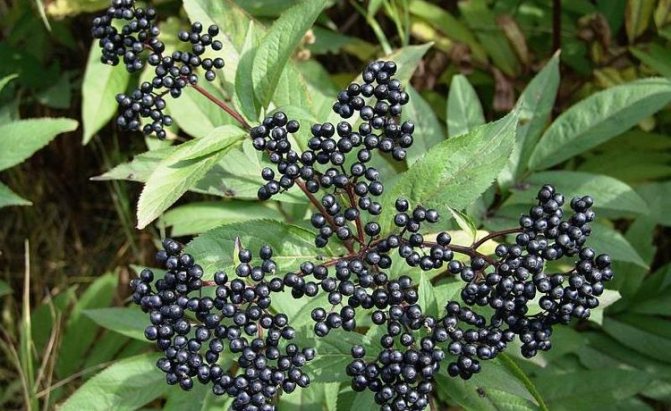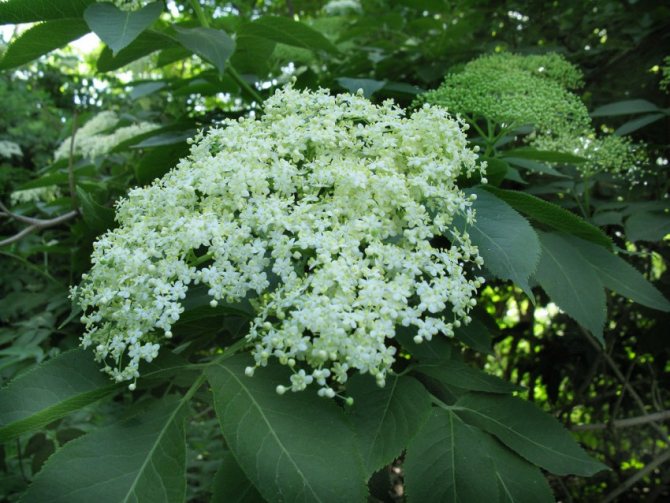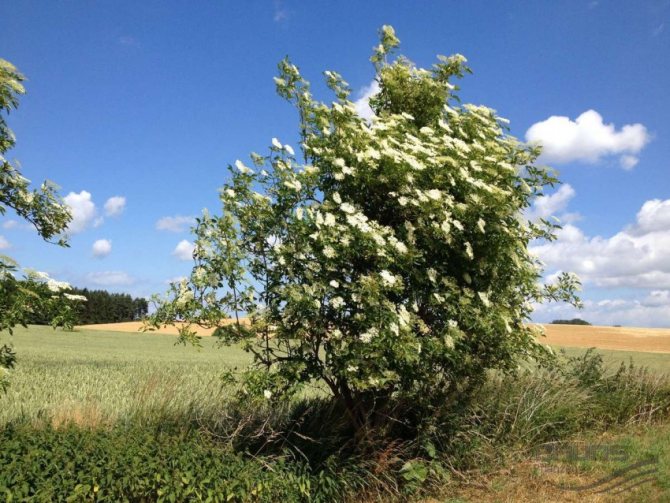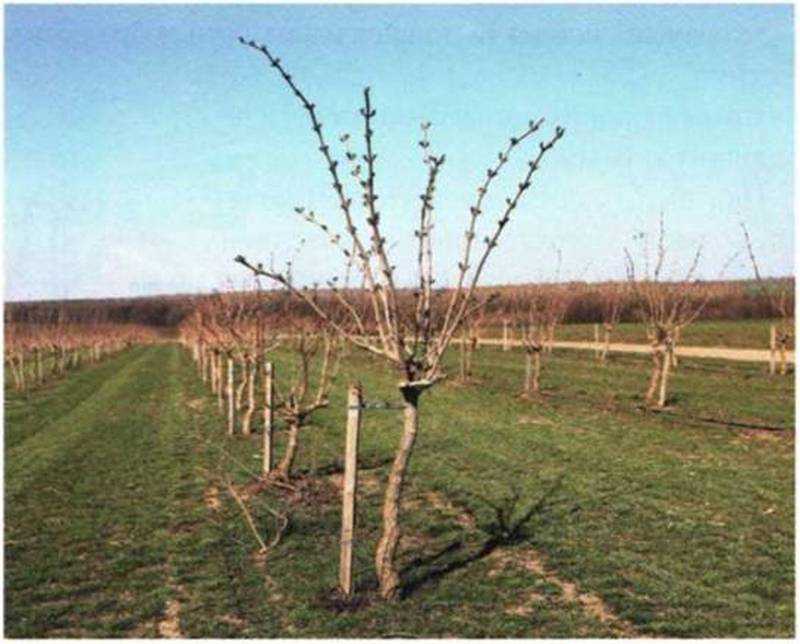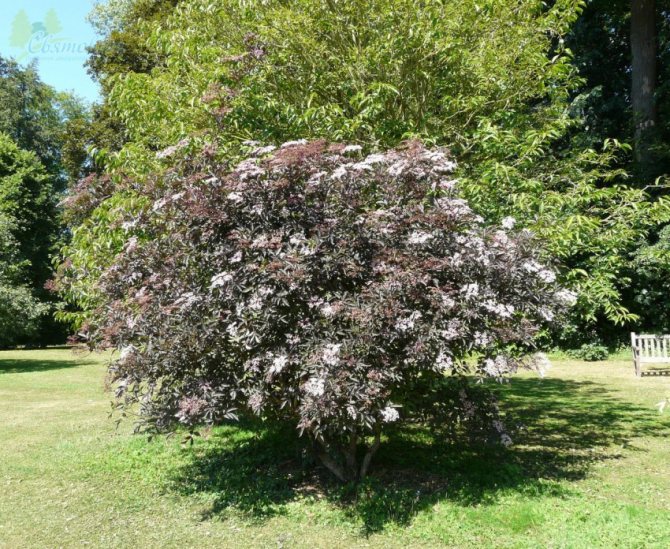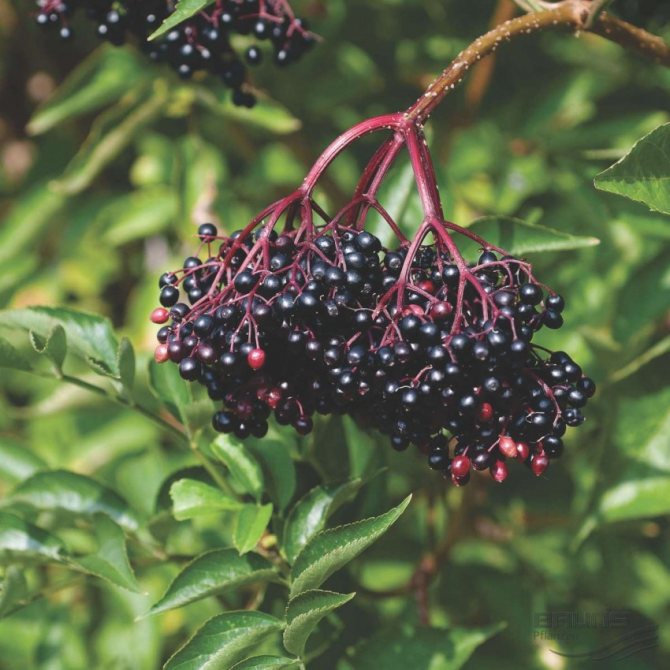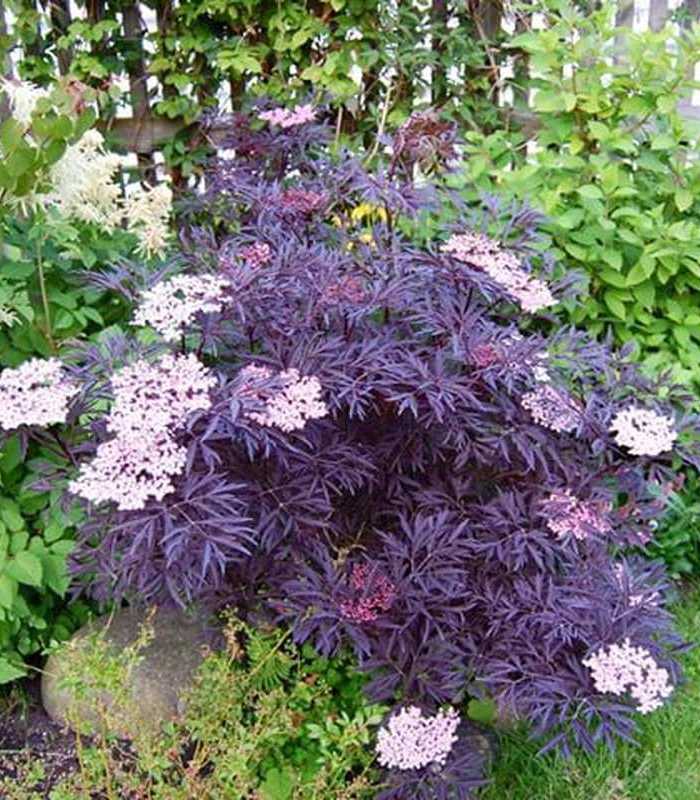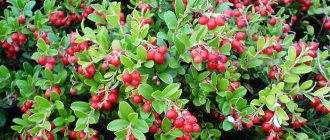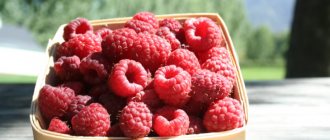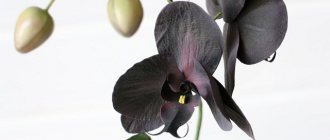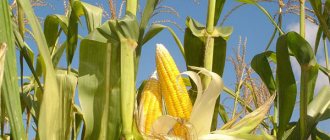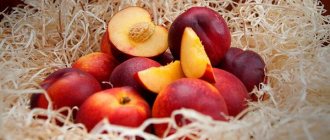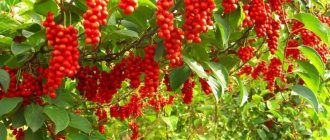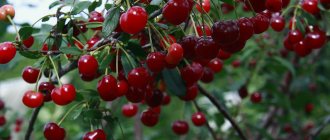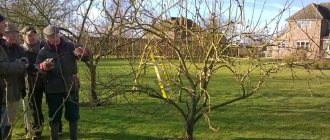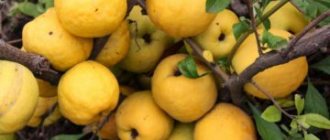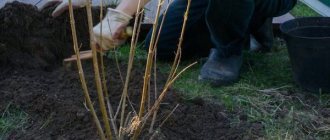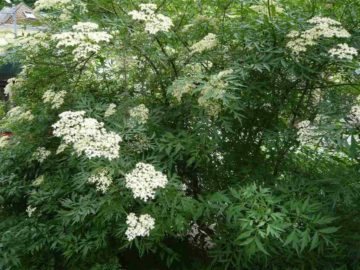
Elderberry is one of those plants that has accompanied a person since ancient times and at the same time enjoys a dual "glory". In some regions, she has long been considered cursed, in others - she was entrusted with the treatment of the sick and was planted near houses to improve well-being. Currently, gardeners are no longer interested in the legends and beliefs associated with this plant. But they highly value its decorative and medicinal qualities.
But in order to grow a shrub on your site, you need to get to know him better. To find out more about what kind of elderberry plant is, its description and photo will help. The advice of experienced gardeners will help to unravel the "secrets" of successful cultivation.
Content
- Listen to the article
- Description
- Planting an elderberry When to plant
- Planting in spring
- Planting in autumn
- Spring care
- When to trim
- How to propagate
- Healing properties
Recipes
From herbaceous elderberry, you can prepare various folk remedies that help with many diseases: decoctions, infusions, syrups. They are recommended for both internal and external use. For the preparation of funds, flowers, leaves and berries are used. Most often, herbal decoctions and infusions are used for the fastest recovery from respiratory diseases.
With the flu
A person with the flu is always advised to drink plenty of warm drinks. Elderberry drink will help to quickly cope with the disease.
Planting and caring for elderberries
- Landing: in spring (before the buds swell) or in autumn, at the beginning of October.
- Bloom: May June.
- Lighting: bright light.
- The soil: wet loamy or sod-podzolic with pH 6.0-6.5.
- Watering: in a drought - once a week at a consumption of 10-15 liters of water per 1 bush. Young bushes require more frequent watering.
- Top dressing: in spring and in the first half of summer - with nitrogen fertilizers (slurry, infusion of chicken droppings, urea), from the second half of summer - with potassium-phosphorus fertilizers. Elderberries are not fed in autumn.
- Cropping: annual in spring, on dormant buds, or during leaf fall.
- Reproduction: seeds, cuttings, layering and dividing the bush.
- Pests: aphid.
- Diseases: not amazed.
Read more about growing elderberry below.
Watering
The culture loves moderately moist soils, therefore, in dry summers, it needs regular watering, about once a week for large plantings and 2 times for young seedlings. After watering, loosen the soil so that a crust does not form, which blocks the access of oxygen to the roots.
In an ordinary summer with periodic rains, plantations do not need watering, and a layer of mulch will prevent moisture from evaporating and protect the roots from overheating.
Elderberry plant - description
Most of the representatives of the genus are small trees or shrubs, but perennial grasses, for example, herb elder, are also found in the genus. In the middle lane, 13 species of elderberry are cultivated, and the most common is the black elderberry plant, a description of which we bring to your attention.
Like most species in the genus, black elderberry is a shrub or small tree 2 to 6 m high, growing in the undergrowth of deciduous and coniferous forests, sometimes forming whole thickets. Elderberry stems are branched, with a thin woody shell and a porous soft white core. Young branches of elderberry are green, but over time they become brownish-gray with a lot of small lentils. Elderberry leaves, large, 10 to 30 cm long, pinnate, consisting of several oblong, long-pointed leaves on short petioles, opposite.
Fragrant elderberry flowers of a cream or dirty yellow shade, 5-8 mm in diameter, are collected in large multiflorous corymbose flat inflorescences up to 25 cm in diameter. Elderberry inflorescences appear in May or June. Elderberry fruits are almost black berry-shaped drupes up to 7 mm in diameter with dark red pulp and 2-4 seeds. Fruiting begins in August or September.
- Batun onion: growing from seeds, planting and care
Elderberry is in demand not only in amateur gardening, but also in folk medicine, so we will tell you about how to grow this shrub in your garden, and describe the medicinal properties of elderberry and contraindications that you should know about.
But not everything is so simple
Of the forty species, some are far from medicinal. For example, the elderberry is undersized (herbaceous). The plant is poisonous from roots to fruits. It is difficult to distinguish a dosage form from a poisonous one - they are very similar in appearance. Here is the popular rumor and added elderberry to the "list of witch's herbs."


Interesting! "Honey" is made from flowers, wines and syrups are made. From berries - jam. In France, dry berries are traditionally used instead of raisins - they are added to baked goods and cookies.
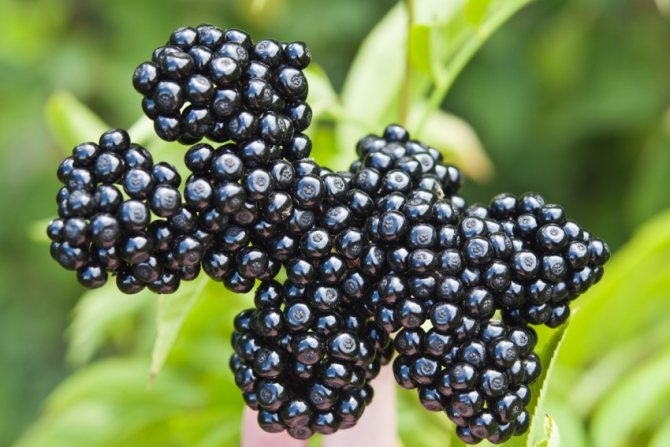

Planting an elderberry
When to plant elderberry
Planting and caring for a black elderberry is not much different from planting and caring for any other shrub. Elderberries are planted in spring or autumn. The best planting material is one- or two-year-old elderberry seedlings.
Where does elderberry grow? The elderberry is an unpretentious plant, but if you plant it in deep shade or in poor soil, this will negatively affect both its appearance and development. Find an open and sunny spot for the elder tree on the north or east edge of the plot, especially if you plan to grow an ornamental variety with variegated or colored leaves. Traditionally, elderberry, whose young shoots have an unpleasant odor that repels even flies, is planted near toilets, cesspools or compost pits.
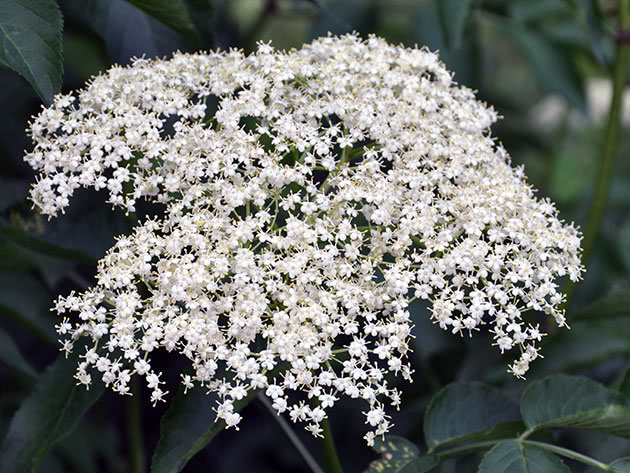

As for the composition of the soil, the optimal soil for elderberry is moist loam or sod-podzolic soil with a pH value in the range of 6.0-6.5 pH. Acidic soils will have to be limed by adding dolomite flour, and this should be done two years before planting the elderberry.
Planting elderberries in spring
When planning to plant an elder seedling in the spring, prepare for it a hole 80 cm deep and 50 cm in diameter for a month.When digging out the soil from the upper layer, discard it to one side, and from the lower one to the other. If you intend to grow an elderberry like a tree, drive a stake of such length into the center of the hole so that it rises about half a meter above the surface of the site. An elder, grown in the form of a bush, will not need support. Mix the fertile soil from the top layer with 7-8 kg of humus, add 50 g of phosphates and 30 g of potash fertilizers to the soil mixture and, after mixing thoroughly, pour two-thirds of this mixture into the pit.
On the day of planting, loosen a soil cushion at the bottom of the hole, lower the seedling into it and first sprinkle the roots with soil from the bottom layer, and on top with the rest of the soil mixture with fertilizers. As a result, the root collar of the seedling should be several centimeters above the level of the plot.After planting, tamp the soil in the near-stem circle and pour 10-15 liters of water over the seedling, and after it is absorbed, the soil settles and the root collar is flush with the surface of the site, tie the seedling to a peg.
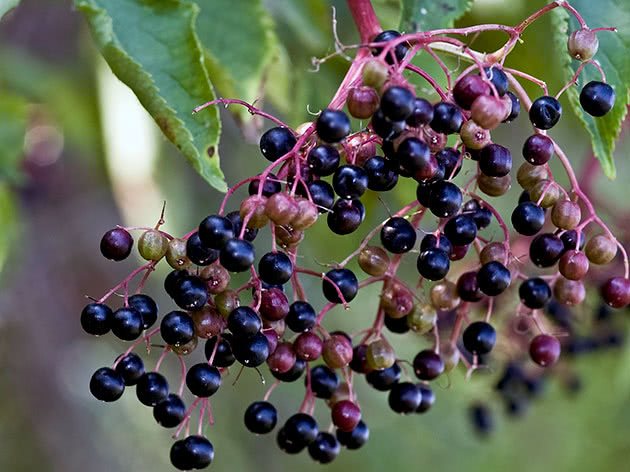

Planting elderberries in autumn
The autumn planting of an elderberry is carried out in the same order and according to the same rules as the spring one: a hole is dug in advance and filled with organic matter and fertilizers, after which an elderberry seedling is planted so that the root collar, after watering and sedimentation of the soil in the hole, is flush with the surface plot.
Biological description [edit | edit code]
Elderberry herb is a perennial herb with an unpleasant odor. The height of an adult plant is from 50 to 150 cm [3].
The stem is straight. Leaves up to 20 cm long, with a petiole, which is 4-5 times shorter than the plate; consist of 9-11 pointed leaflets with serrated edges. The lower lateral leaflets have petioles, the upper leaflets are sessile [3].
The inflorescence is apical, paniculate, on a long peduncle. Corolla is white, sometimes pinkish or reddish outside. The flowers have an almond scent. Fruits are black, shiny, about 4 mm long, with three or four ovoid seeds [3].
Flowering time - from May to July, fruiting time - from August to September [3].
Elderberry care
Elderberry in spring
In March, trees and shrubs can suffer from sunburn - the bark is very hot under the bright spring sun, and a sharp cold snap sets in at night. To prevent the consequences of this phenomenon, the stems and forks of the skeletal branches of the elderberry are covered with a layer of lime. If damage is found on the bark, made by rodents in winter, disinfect them with a strong solution of potassium permanganate and cover with garden pitch.
On warm, fine days, you can start pruning the elderberry, and then treat the shrub with a solution of Nitrafen or Bordeaux liquid from diseases and pests that managed to overwinter in the bark or soil under bushes and trees. Trunk circles free from insulation material and last year's leaves. If the winter was snowless and the spring was dry, water the elderberry with water recharge.
Summer elderberry care
After the elderberry blossoms, the shrubs are sprayed from pests and powdery mildew.
At the beginning of summer, plants begin to actively grow and form ovaries, so the most important task is to provide the garden with moisture and nutrition. The soil in the trunks must be kept loose and moist. In the bushes frozen in winter, the growth of root shoots begins, which must be immediately destroyed, until it has outstripped the bush itself in growth. To prevent the elderberry from spreading around the garden, you can dig in an old slate around the bush at a distance of one and a half meters and to a depth of half a meter.
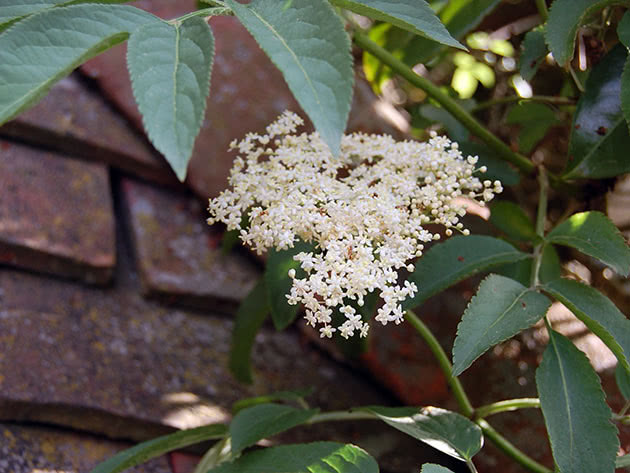

In August, some of the bushes are already starting to ripen and you should be ready to harvest. At the end of summer, it is necessary to create conditions for preparing the shrub for wintering: a rainy summer can cause secondary growth of shoots, which can only be stopped by removing the mulch from under the bushes and pinching the tops of the growing shoots.
How to care for elderberry in autumn
Caring for an elderberry in the fall is preparing it for winter. In September, the elderberry harvest continues, after which sanitary pruning of the shrub is carried out. At the end of the month, they dig up the soil in the near-trunk circles, apply fertilizers and, in dry autumn conditions, carry out winter watering of the elderberry. If you are just planning to plant an elderberry, dig holes for the seedlings at the end of September and fill them with fertilizers.
- Currants in the fall: planting and care, pruning in the fall and transplanting
In October, shrubs are treated from pathogens and pests that have settled down for the winter in the bark of branches or in the soil under a bush, and boles and large branches, in order to protect them from winter rodents and spring burns, are whitewashed with fresh lime or chalk with the addition of copper sulfate and carpentry glue. Trunk circles are insulated with peat, humus or dry foliage.
As soon as snow falls, throw it under the bush - this will be the best protection of the elder from frost.
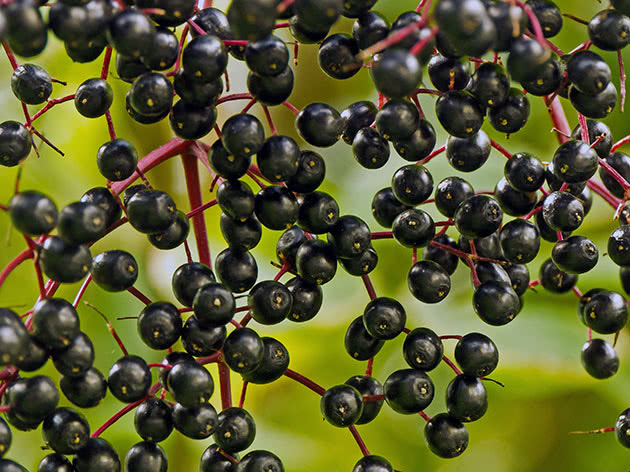

Elderberry processing
Twice a year - in early spring, before bud break, and after leaf fall - elderberry bushes and the soil under them for preventive purposes are treated with a 1% solution of Bordeaux liquid or a 2-3% solution of Nitrafen. They do this in order to destroy fungal infections or harmful insects that have hidden for the winter in the bark or in the upper layer of the soil.
Instead of these drugs, you can use a 1% solution of copper sulfate or another drug of a similar effect. A seven percent solution of urea, if it is treated with a shrub in the spring, acts not only as a fungicide and insecticide, but also as a nitrogen supplement that the plant needs at this time of the year.
Watering the elderberry
A rainy summer and mulch in the trunk circle, which does not allow moisture to evaporate quickly, can save you from watering the elderberry. It is best to mulch the soil around the elderberry bush with compost or rotted manure. In summer with normal rainfall, you will not have to water the elderberry, but in a dry, sultry season, pour 10-15 liters of water under the elderberry bush once a week. Young plants are watered more often. Do not let the soil under the bushes dry out. After watering or rain, it is very convenient to loosen the soil around the bushes and remove weeds.
Elderberry feeding
Elderberry grows well in fertile soil even without top dressing, but it responds very well to nitrogen fertilizers applied in spring and summer to poor soil. From organic fertilizers, elderberry slurry and infusion of chicken manure are best perceived. She is also favorable to urea and complex mineral fertilizers. Elderberries are not fed in autumn.


Diseases and pests
Black elderberry Black Beauty: description and characteristics of the variety
Elderberry is a plant resistant to pests and diseases. Sometimes aphids can infect the tops of the bush, and spider mites are even less common. To prevent this situation, in the spring the shrub is treated with a solution of Nitrafen (it is prepared exactly according to the instructions) or Bordeaux liquid. If the aphid has already appeared, then it is very difficult to fight it, which is why prevention is so important. To get rid of this pest, soap solutions, herbal infusions (for example, onion or garlic) and birch tar-based products are recommended, but they are used only if the berries have already been harvested.
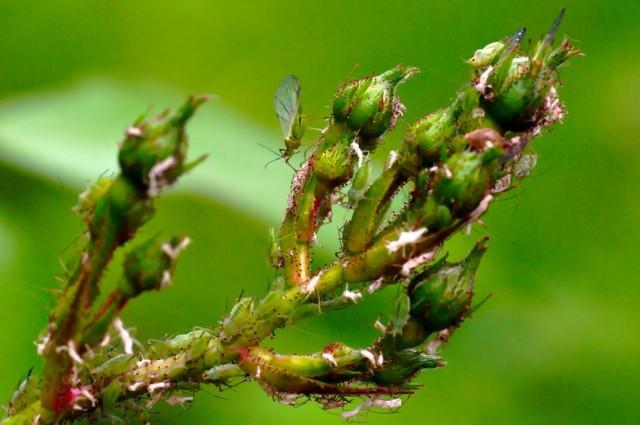

Aphid
Elderberry pruning
When to prune an elderberry
Like many garden plants, elderberries require annual sanitary and formative pruning. Once every three years, to rejuvenate the bush, all branches are cut to a height of 10 cm. It is best to cut the elderberry during the dormant period - in early spring, until the buds on the branches begin to swell. True, sometimes sanitary pruning of elderberries is required in the fall, after harvesting and leaf fall.
Pruning elderberry in spring
In a newly planted seedling, the shoots are shortened by 10 cm to a strong outer bud. By its nature, the shape of the crown of the elderberry is neat, oval - so keep it in this form by cutting out branches and shoots growing inside the bush or at the wrong angle. Dry, diseased, weak and frostbitten shoots are also subject to removal. Root growth must be removed while it is in its infancy. Every year, a quarter of the old branches are cut to the base of the bush. Sections must be lubricated with garden pitch.
Pruning elderberry in autumn
If during the harvest some branches of the elderberry were injured, carry out sanitary pruning, removing diseased and improperly growing shoots at the same time as the damaged ones. If not necessary, only prune in the spring.


As you can see, planting an elderberry and caring for it is simple and not laborious, but the benefits of an elderberry, which we will discuss in a separate chapter, are indisputable.
Alternative names
The Latin name of the elder Sambucus, according to scientists, comes either from the Greek word that translates as "red paint" (since the plant has coloring properties), or from the name of the Iranian musical three-stringed instrument "sambuk", made from elderwood.
Important! Unripe fruits, flowers and seeds of elderberry pose a threat to human health. They contain poisonous hydrocyanic acid.
The people call the elderberry the eye of the devil, the girl's sambuca, the tubular tree, the tree of fate, the old lady, the buchkan, the squeaker, the elderberry.The herbaceous species is also called smelly, dwarf, stunted, barren, elder.
Elderberry propagation
How to propagate elderberry
Elderberry is propagated by seeds, cuttings, dividing the bush and layering. Unfortunately, during seed propagation, the varietal and even species properties of elderberry are almost never preserved, therefore, most often the plant is propagated vegetatively.
Seed propagation of elderberry
Elderberry seeds are harvested in the fall, in mid-October, by rubbing ripe fruits through a sieve. Seeds are sown in rows, the distance between which is about 25 cm. The sowing depth is 2-3 cm. By the end of the next season, the seedlings will grow to 50-60 cm.
Elderberry propagation by cuttings
Harvested in June or early July, green cuttings 10-12 cm long with two or three internodes and a pair of upper leaves, on the petiole of which only two paired segments are left, are planted in a mixture of sand and peat in equal parts and covered with a high polyethylene cap to create greenhouse conditions for the cuttings. Do not forget to treat the lower sections with a root former before planting - it will increase the rooting ability of the cuttings by 2-3 times.
To create the necessary level of air humidity, during the first 4-6 days, spray the film from the inside with water from a fine spray, being careful not to get drops on the leaves of the cuttings, as this can cause them to rot. In the fall, rooted cuttings are planted in the ground.
- Goji: properties and contraindications, planting and care
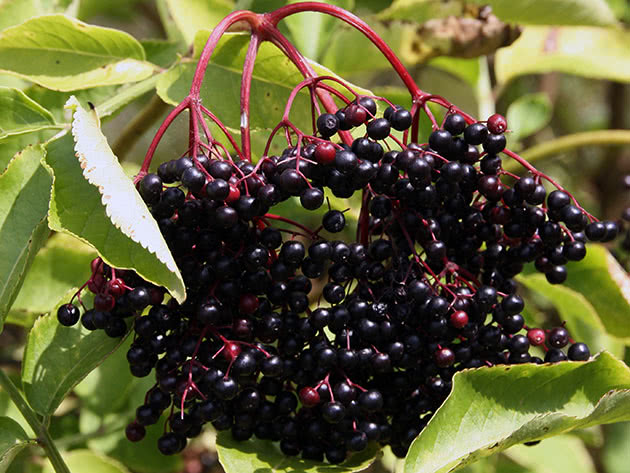

If necessary, lignified one-year-old cuttings can also be rooted, which are harvested at the end of the growing season, stored in the snow or basement in winter, and planted in loose, fertilized soil in the garden in spring and each of them is covered with a glass jar or a plastic bottle with a cut throat until then, until the cuttings grow roots.
Elderberry propagation by layering
This method of reproduction gives almost one hundred percent survival rate. For layering, either young green or two-three-year-old lignified shoots are used, which are bent to the ground, laid in pre-made grooves, in each of which a little compost is placed, the shoots are fixed with a metal hook and added dropwise, leaving the tops above the surface.
If you lay the lignified layers in the grooves in May or early summer and pull them at the base with wire, they can be separated from the bush in the fall and planted. Green shoots are not dragged with wire and are planted from the mother plant not in the fall, but only the next year, when they become lignified.


Dividing the elderberry bush
This breeding method is carried out in the fall. An adult, large elderberry bush is dug up and divided into approximately equal parts. You may need to use an ax or saw to split the elderberry root. Each section should have developed roots and shoots. Cuts and cuts are treated with wood ash and the cuttings are immediately planted in pits prepared in advance. You can plant them in containers and postpone planting in the ground until the spring. Dividing the bush makes it possible to immediately get a large plant.
Elderberry smelly, Elderberry herbal, Elderberry undersized, Elderberry dwarf, Buznik
the south of the European part of Russia, Ukraine, Belarus, the Caucasus - the edges of deciduous forests, forest-steppe, ravines, river banks, rocky slopes, along the railways, like a weed in fields and vegetable gardens
for spring sowing, a 2-month cold stratification at 0 + 5 degrees is required
dividing rhizomes in spring
cold-resistant, withstands frosts up to -4 degrees
insufficiently winter hardy, up to -29 degrees
in case of a snowless winter, young plantings after pruning are covered with sand with the addition of wood ash
a plant with a powerful, thick rhizome, actively grows to the sides, it is difficult to limit
flowers are small, with a white, slightly pinkish corolla, with the smell of almonds
inflorescences - apical thyroid panicles, 10-15 cm in diameter
- leaves are opposite, 5-20 cm long, on short petioles, pinnate, 9-11 lanceolate, pointed, along the edge of serrate leaves, lower leaves on short petioles, upper leaves sessile;
- autumn leaves turn red
fruits are spherical, black, shiny, 4-6 mm in diameter, ripe - with red-violet juice, ripens in August-September
erect plant with straight or slightly branched stems
- suitable for "forest" gardens, naturalization is possible;
- for partial shade, although a sunny place is preferable;
- for landing on the shore of a reservoir;
- the fruits are edible after heat treatment, can be used for jam, as a seasoning, as well as for obtaining blue dye and ink;
- vegetative parts have an unpleasant odor, are used to scare away mice, moles, some pests
all parts of the plant, although flowers are most commonly used
cyclotols (inositol, quercite), alicyclic compounds, mono- and sesquiterpenoids (linoolol, citronellol, citronellal, etc.), triterpenoids (ursular acid, etc.), benzene and its derivatives, phenylpropanoids, phenolcarboxylic acids and their derivatives (caffeic, n- coumaric, chlorogenic, methyl salicylate), anthocyanins (cyanidin, delphinidin, pelargonidin, peonidin, etc.), tochromanols, aliphatic hydrocarbons, alcohols, aldehydes, ketones, fatty acids and their derivatives (palmitic, valeric, etc.)
Types and varieties of elderberry
In addition to the black elderberry, a dozen more species are grown in our climate, and we will introduce you to the most interesting of them.
Blue elderberry
An ornamental plant that lives in nature along the banks of streams and rivers, as well as in the mountain pastures of North America. Trees of this species sometimes reach 15 m in height, and sometimes grow as shrubs with thin branches that have a red tint at a young age. Elderberry trunks are light blue, light sandy in color, the leaves consist of 5-7 naked, bluish-green coarsely serrated leaves up to 15 cm long. Fragrant cream flowers are collected in a corymbose inflorescence up to 15 cm in diameter, which blooms for about 3 weeks.
Elderberries are blue, spherical, bluish-black due to a bluish bloom, they look very impressive. Frost resistance of this species is below average.
Siberian elder
It grows naturally in East Asia, the European part of Russia, in Eastern and Western Siberia and in the Far East, preferring mixed and dark coniferous forests and rising to 2200 m above sea level. It is an ornamental shrub up to 4 m high with an average winter hardiness.
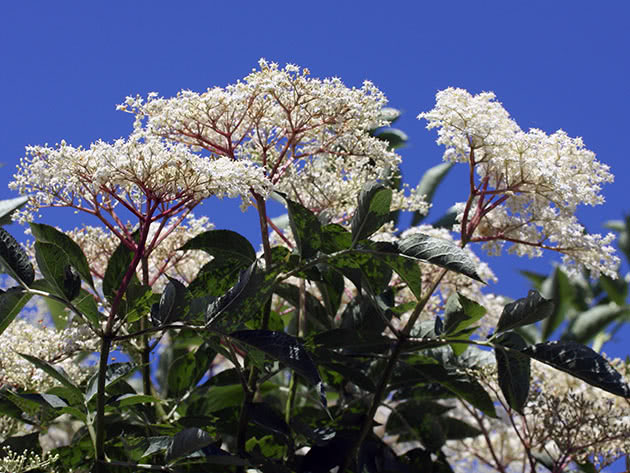

Elderberry herbaceous
It grows wild in Ukraine, the Caucasus, Belarus and the south of the European part of Russia, choosing rocky talus and river banks. This is a foul-smelling, but beautiful herbaceous plant during flowering and fruiting reaches a height of 1.5 m. Herbaceous elderberries, forming shields on the tops of the shoots, are poisonous when fresh, as they contain hydrocyanic acid.
This species is sometimes planted around the currant, since the herbaceous elder drives away all harmful butterflies and kidney mites, but then it is very difficult to remove this plant with a thick creeping rhizome from the currant. Dry flowers of herbaceous elderberry have a pleasant smell, they are poured over the apples laid in storage.
Elder canadian
Grows naturally on moist and nitrogen-rich soils of eastern North America. This highly decorative plant, reaching a height of 4 m, is often used in landscaping. The shoots of plants of this species are yellowish-gray, the leaves are large - up to 30 cm in length, small fragrant flowers of a yellow-white hue make up slightly convex umbellate inflorescences up to 25 cm in diameter, and the edible spherical shiny fruits are colored dark purple. This species has been cultivated since 1761. It is very similar to the black elderberry, but much more resistant to the conditions of the middle lane.
Elderberry canadensis has several decorative forms - maxima (the most powerful form of all), acutiloba (graceful, with strongly dissected leaves), chlorocarp (with yellowish-green leaves and green berries) and aurea (with bright yellow leaves in spring and autumn and green in summer).
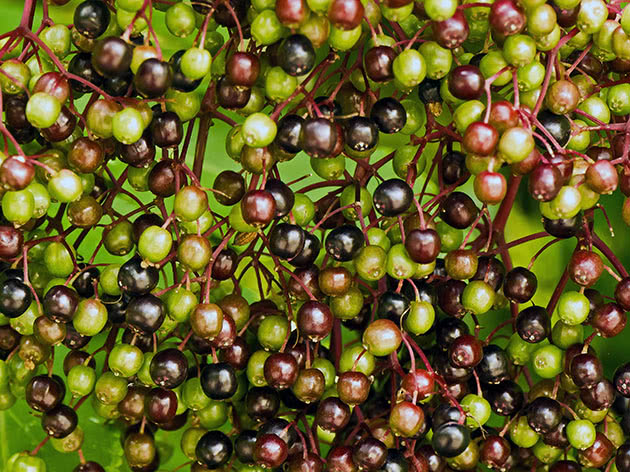

Elderberry red
Or racemose originally from the mountains of Western Europe. This is a tree up to 5 m high or a deciduous shrub with a dense ovoid crown, light green odd-pinnate leaves up to 16 cm in length, consisting of 5-7 elongated and pointed leaves with sharp teeth at the edges. Greenish-yellow flowers are collected in dense oblong inflorescences up to 6 cm in diameter. Fruits are small bright red berries. Both leaves and branches have an unpleasant odor. The plant is very beautiful precisely during the fruiting period. In culture since 1596.
This species has the following decorative forms:
- low - dwarf, compact plants;
- thin-leaved - in this variety, the purple leaves when opening are dissected into very narrow segments, so the plant looks very graceful;
- purple - with purple or pink flowers;
- yellowish - in this variety, the fruits are yellow with an orange barrel;
- dissected - the most frequently cultivated variety of red elderberry with early blooming large leaves, consisting of 2-3 pairs of finely dissected leaves;
- feathery - with purple, when blooming, serrated leaves, dissected almost to the middle. Popular varieties of this variety are Plumosa Aurea with openwork leaves yellow in the sun and green in the shade and Sutherland Gold with even more dissected yellow leaves.
Elder Zimbold
It is found naturally in Japan, the Kuriles, Sakhalin and the Far East, and in Western Europe it is grown in culture as an ornamental plant. This is a spreading bush or tree up to 8 m high.This species is similar to the red elderberry, but it is much more powerful: the leaves, consisting of 5-11 parts, reach a length of 20 and a width of 6 cm.The inflorescences are also larger than those of the racemose elder, but looser. This species has been cultivated since 1907.
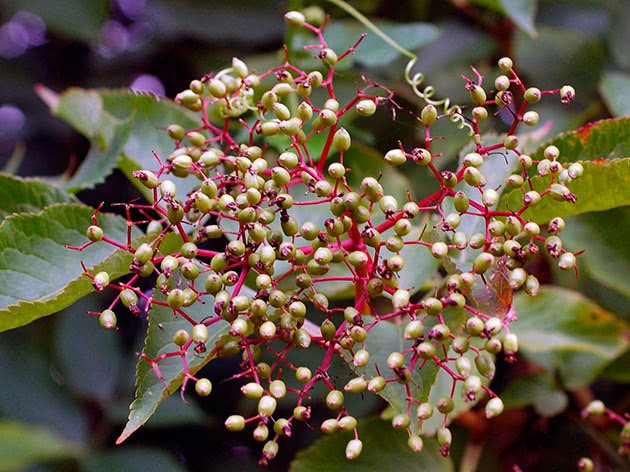

The black elder, described in detail in the article, also has several popular decorative forms:
- Guincho Purple - shrub up to 2 m high with green leaves at an early age and black-purple leaves at maturity, which acquire a red tint in autumn. The flowers in the bud are deep pink in color, but when opened, they are white with a subtle pink tinge. The shoots of plants of this variety are purple. All these advantages are manifested only in the sun - in the shade the bush remains green;
- Marginata - a fast-growing bush up to 2.5 m high with fragmented silvery-cream edging along the leaves;
- Pulverulent - a slow-growing bush with spectacular leaves, dotted with white spots, stripes and strokes.
Ornamental forms are usually less hardy than the main species, but they look great in the garden as a specimen and in a group with other plants.
The use of elderberry in landscape design
What an elderberry looks like in nature and when planting on a site can be seen in the photo. The elderberry owes its popularity among landscape designers, first of all, to its versatility - it fits harmoniously into any landscape. A huge species and varietal variety allows you to choose plants that are suitable for decorating a garden in any style.
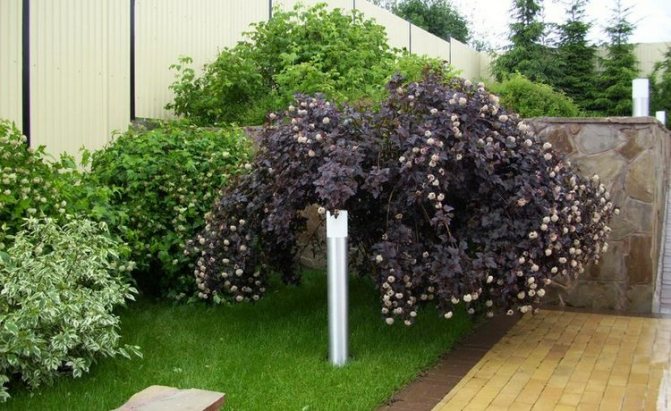

Despite the fact that elderberry is considered one of the largest shrubs, it can be used not only in gardens and parks of a large area, but also in small areas:
- elderberry can perfectly fit into the oriental flavor and can successfully replace the capricious and expensive Japanese maples. To do this, it is enough to perform the appropriate pruning of the branches, giving them the necessary shape;
- shrubs planted in a row will be a good alternative to a hedge, the height and shape of which can be changed at your discretion;
- dwarf variety of red elderberry "Lemony Lace", supplemented with hydrangeas, multi-colored coleus, phlox, Japanese spirea will help to create original compositions. Also, this plant goes well with a low weeping Canadian cercis (purple) of the "Whitewater" variety;
- compositions made of low varieties of elderberry, conifers in combination with barberry, privet, hawthorn, blooming buddley look beautiful in a garden or park;
- varietal spreading elder bushes with openwork foliage of purple or golden color will create a bright accent on the emerald green lawn;
- an effective composition on the site will be created by crops with different shades of foliage.
Recently, undersized and dwarf elderberry is also widely used for arranging rock gardens and small flower beds.
Experienced landscape designers advise using elderberry as:
- single accents from the dull side of the house;
- a spectacular single shrub near the patio or veranda;
- protection of the site from wind, drafts, exhaust gases from the road. For this purpose, bushes and elder trees are planted around the perimeter of the entire site;
- lush background and focal points;
- undergrowth for taller coniferous or deciduous trees.
Also, many successfully use the elderberry's ability to scare away insects by planting shrubs near recreation areas, sanitary facilities, compost heaps. In addition, the spreading branches of the elderberry, its aroma during flowering and bright berries attract many insects and birds to the site, making gardens and parks filled with life.
Properties of black elderberry - harm and benefit
The healing properties of black elderberry
Elderberry inflorescences contain valerian, acetic, coffee, malic and chlorogenic organic acids, tannins, semi-solid essential oil, choline, carotene (provitamin A), mucous and paraffin-like substances, and sugars. The properties of elderberry flowers are truly unique.
Elderberry contains ascorbic acid (vitamin C), carotene, malic acid, resin, glucose, fructose, amino acids and coloring agents.
Fresh black elderberry leaves contain carotene and ascorbic acid, essential oil, tannins, resinous substances, and dried leaves contain provitamin A1.
The bark contains choline, essential oil and phytosterol.
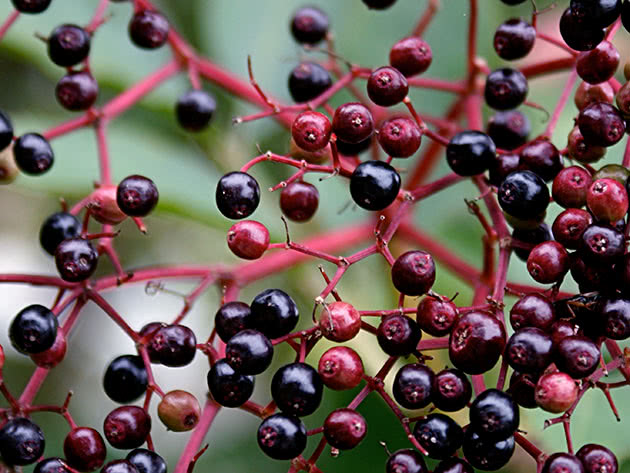

An infusion of dried elderberries (1:10) stimulates bile excretion, increases diuresis and intestinal motility. Elderberry flower tea relieves bronchitis, laryngitis, neuralgia and flu. It is also used as an anti-inflammatory mouthwash.
In folk medicine, not only berries have long been used, but also the color of the elder, as well as the leaves and bark of the plant. From elderberry flowers, infusions and decoctions were made, which have diaphoretic and antibacterial effects. They are still used in the treatment of colds, flu, tonsillitis and diseases of the upper respiratory tract.
An infusion of black elderberry flowers is prepared as follows: a tablespoon of flowers is poured with a glass of hot water, brought to a boil, cooked over very low heat for 15 minutes, then cooled, filtered, squeezed and drunk half a glass before meals 2-3 times a day for rheumatism, gout or arthritis. A lotion is prepared from elderberry flowers, toning and rejuvenating the skin: 10 elderberry inflorescences are poured with two glasses of boiling water, insisted for a day, filtered and stored in the refrigerator.
Elderberry leaves are astringent, antipyretic, soothing, diuretic and laxative. When applied externally in a steamed form, they relieve diaper rash, hemorrhoids, boils and burns. And for the treatment of constipation, young elder leaves are boiled in honey.


Elderberry bark is used to prepare a decoction used to treat kidney and skin diseases, gout, rheumatism and arthritis.
In addition, jam, jelly and wine are made from elderberry.
Useful information about the plant
The use of elderberries for decorative purposes is a trend in recent years. Previously, it was grown mainly for purely practical purposes. Gardeners were interested not only in its curative effect. It has long been noted that this plant repels rodents and insects (for example, flies and cockroaches). Therefore, elder bushes were planted specifically closer to barns, and brooms of their elder branches were kept in houses.
Note! But the beneficial properties of the plant are not limited to this either. It is possible to use black elderberry berries and for food purposes. But they are not eaten only raw. You can cook jam and preserves from them, and they also make excellent jelly. In England, elderberry is used as a traditional drink, and its berries are also boiled with apples to make the filling for the popular pie.
Some culinary experts suggest using dried ripe berries in the preparation of lightly salted cucumbers. But the young inflorescences of the plant are added to the grape must - this will improve the taste and aroma of the wine in the future. Also, the inflorescences are added to the cookie dough. They are also used as a seasoning for first courses.
So, by planting black elderberry bushes on the site, the gardener gets not just a beautiful, but also a very useful plant that does not require laborious maintenance, but will delight with spectacular leaves and tasty fruits.
Storage
Fresh berries are stored in the refrigerator for 8-10 days, the fruits can be frozen, dried and preserved. Dried fruits are stored for 6 months. Elderberry flowers are cut during blooming and dried in the attic or in the shade, chopped through a sieve or threshed. Ripe fruits are cut in bunches, laid out in a thin layer on a baking sheet, dried in the sun, then dried in the oven at a temperature of 60-65 degrees. The dried elderberry is separated from the twigs and stalks and stored in a dry, well-ventilated place. The roots are harvested in late autumn, dried, crushed and stored for up to 3 years. The bark is harvested in early spring from two-year-old branches. The first gray layer must be scraped off, then the bark is dried at a temperature of 65-70 degrees.
Dried flowers and berries are stored for up to 2 years in bags, in a dry and well-ventilated area. Raw materials should be regularly inspected for mold and parasites.


What does the Canadian elderberry shrub and its berry look like (with photo)
To imagine what the Canadian elderberry looks like in the photo, you need to know that it is the sister of the black variety native to North America. It differs in larger fruits, collected in clusters, reaching a diameter of 25–45 cm. The berries of the Canadian elderberry have a purple hue and a more pronounced sweetish taste. The Canadian elder loves nitrogen-rich soil, but is otherwise unpretentious, like its black cousin. Bushes "Canadian" grow up to 3 meters, the leaves are very decorative. The flowers of the Canadian elderberry are milky white, fragrant. If you want to plant a Canadian elderberry in your summer cottage, then keep in mind that the bush is large and powerful. You will need to allocate extra space for the plant. In exchange for this, the "Canadian" will delight you with large convex inflorescences and a good berry harvest. In winter, the Canadian elderberry freezes only in severe frosts. From cold weather, first of all, young twigs-shoots, which did not have time to dress in bark in warm weather, suffer. However, with the arrival of warm days, even a frozen elderberry quickly regains strength, blooms and bears fruit.
Look at the elderberry bush in the photo - some specimens delight with their power.
But the elderberry berry in the photo does not cause much emotion, since it is unremarkable.
Tincture for women
Inflorescences soften severe conditions with menopause. To prepare the mixture, you need to take the flowers of the tree and alcohol (ratio 1: 5), remove it in a dark, cool place and shake it every few days. Drinking this medicine is recommended 3 times a day, 30 drops.
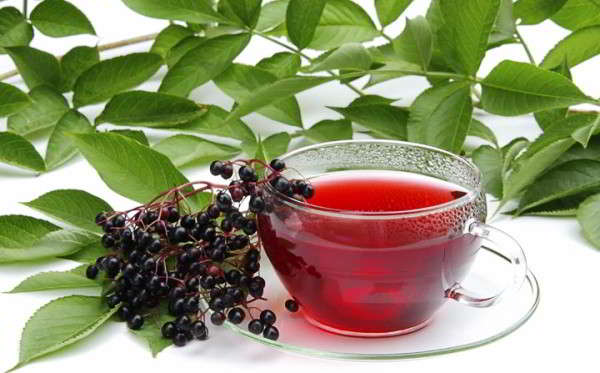

This tincture is suitable for relieving arthritis pain, but the method of application is different, it must be applied to the affected areas. It is good if in parallel the patient uses a healing infusion of inflorescences.
Fresh juice of elderberry herb is able to defeat vitamin deficiency (you need to drink it for 14 days). Jam from its berries, cooked with the addition of sugar (4 minutes) will cleanse the lungs, and if you use it for several months, tuberculosis will win.
Application in medicine
Black elderberry is used to treat many diseases:
- liver disease
- stomach ulcer
- diabetes
- skin diseases
- cold
- malignant tumors
- chronic constipation
- nervous disorders
- various edema
- diseases of the female genitourinary system
- dropsy
- arthritis
- rheumatism
- gout
Elderberry has antipyretic, diaphoretic, antibacterial, astringent, anti-inflammatory, diuretic, sedative and laxative properties.
Red elderberry is used for headaches, bronchial asthma, colds, rheumatism. Infusion of flowers is used externally for rinsing with acute tonsillitis and inflammation of the oral cavity. Elderberry jelly has laxative properties.


Origin
The appearance of the elderberry is shrouded in many legends. There are popular beliefs, known since the creation of the universe, they tell that Judas hanged himself on this tree. During pagan times, it was an object of worship, among the ancient Slavs it was used as a talisman, hanging in the house on Ivan Kupala, or St. George's Day.
If we discard all the magical attributes, leave only the facts, then it becomes clear that this is a perennial belonging to the adox family (alternative sources are honeysuckle). Greece is considered its homeland, hence the theory about the appearance of its name. Some argue that the plant is named after a musical instrument that is made from its shoots, others attribute its coloring properties (from the Greek sambyx - red paint).
Growing in gardens
Often summer residents breed a plant in their personal plots for decorative purposes. For this, special varieties are used, for example, "black lace", which has a black-pink tone of leaves and pinkish flowers.
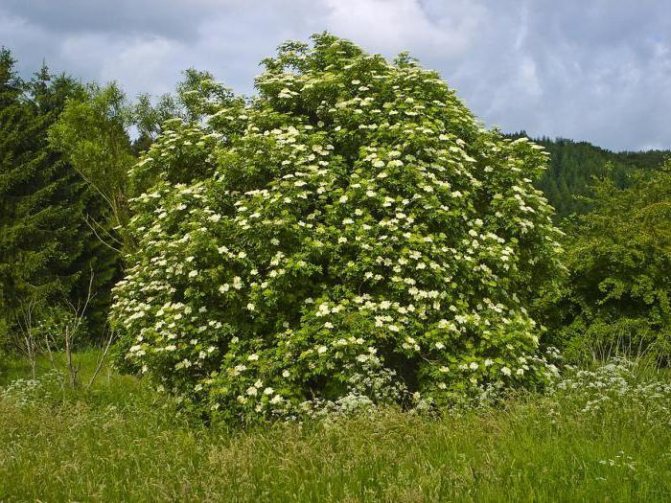

For quick rooting, the bushes are advised to be planted in places well-lit by the sun and to make abundant watering. In early spring, plants are fed, and in summer, fertilizers are added to the water for active growth when watering.
When transplanting bushes, use the following mixture:
- one part of peat and sand;
- two - sod land.
Possible difficulties in growing elderberry
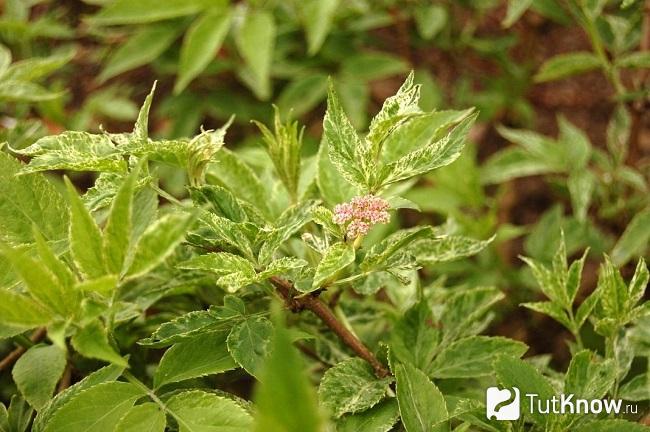

Since the foliage, bark and some other parts of the plant are poisonous, almost all varieties of elderberry are not affected by harmful insects, and they usually do not notice any difficulties in care. However, it happens that you can see aphids on it, which appear on the bushes. Therefore, it is recommended, with the arrival of spring, to treat plantings with insecticides (Karbofos, Aktara or Aktellik) without violating the instructions in the instructions.
Red - inedible
Unlike the edible black elderberry, the red elderberry is not edible.
Attention!
Elderberry is not used in mainstream medicine due to its toxicity.
Among the people, the healing qualities of the red elderberry are recognized. All parts of the plant are used.
Red elderberry is also called brush sambuca, since the bunches of berries slightly resemble grape bunches.
This is a very beautiful plant that is loved by land reclamators, landscape designers and admirers of traditional medicine. Grows in bushes or low trees, blooms about a month earlier than black elderberry. The brushy beauty is an excellent melliferous plant, but the smell of flowers is a little sharper and more specific than that of a black relative, so it is better not to plant a red elderberry near the house.But near the bad-smelling places that I would like to hide from both the eyes and the sense of smell - that's it! Three-meter bushes with carved leaves, decorated with bunches of yellowish flowers in May, and bright red berries in September, will delight both the eye and the scent. Flowers, depending on the variety, can have a greenish, pink, purple color, and the berries are found not only red, but also yellow-orange. A very beautiful variety of red elderberry with yellow-gold leaves.
Red elderberry also loves the sun, but not direct sunlight, but partial shade, it is undemanding to care, it grows very quickly. It strengthens the slopes well, it can often be seen on the steep banks of rivers and lakes. It is considered a slightly toxic plant: due to the specific smell of the bark, leaves, crushed berries, as well as vomiting and diarrhea, which can be caused by inept use of red elderberry for medicinal purposes or in cooking. But you don't need to completely abandon the red elderberry: if you approach it wisely and with knowledge, you will only get health benefits. In the household, this red beauty is simply irreplaceable. She can always help in the fight against rodents, and scare away garden pests, and clean the dishes better than any chemistry, and wash her hands even of machine oil! And if you decide to build a beautiful hedge along the fence, the red elderberry simply has no equal in this matter.
Elderberry has been with a person for many centuries
The Latin name for the elderberry sambucus is Sambucus. One of the versions of the origin of this name is from the name of the ancient Iranian instrument sambuza, which was made from elderberry.
Our ancestors found many uses for this plant. One of them is based on the coloring matter of the elderberry fruit. Elderberry juice was used to dye fabrics: cotton, linen, hemp and silk. It turned out to be black, and when mixed with alum, it came out blue. By fixing elderberry juice with vinegar, ink was obtained. The village girls blackened their eyebrows with berry juice.
Used fruits and flowers for the preparation of drinks
For example, fresh flowers, lemon juice, zest and fermented water made a light refreshing drink. From the fermented berries they drove vodka. Also, elderberry is one of the ingredients of the famous Italian liqueur "Sambuca". The exact recipe for its preparation is kept secret, but home craftsmen offer to make the drink themselves and it contains dried black elderberry flowers.
In the villages in the spring, they enjoyed the first greens, so they made salads from various young plants, including young elderberry shoots added to the salads. If you want to experiment, so to speak back to basics, then keep in mind that young elder shoots have a laxative and diuretic effect.
Jam was made from black elderberry berries
The recipe is simple: a centimeter layer of berries was sprinkled with a layer of sugar, and so several layers (for 1 kg of berries, 1 kg of sugar); let stand for a day, boil for 15 minutes and pour into sterile jars.
At a time when plants were treated with respect, the elder was even treated with reverence. It was believed that cutting down an elderberry bush that had grown on its own in the courtyard was unfortunately, and before a sudden meeting with this plant, the men took off their caps. This respect is not idle.
Even Hippocrates believed that elderberry can cure dozens of diseases. And Cikkerot (a doctor of the 18th century) recommended that every housewife have dried elder flowers and jam at home in case of a cold or kidney and bladder disease.
Prepared from berries and young wine
You will need a three-liter can of juice and a glass of sugar or honey. The can is tightly sealed and the gases are vented through a water lock. Fermentation is carried out in a warm place, without access to sunlight. At the end, the wine is bottled, sealed and stored horizontally in the cellar.
Already in the 21st century, the elder was remembered again.It turns out that its use has positive results in the treatment of cancer and diabetes. Vitamins of group B in berries are collected in proportions that are exceptionally correct for humans.
You can talk for a long time about the beneficial properties of this plant familiar to the eye, but there are also contraindications. The most basic is the individual intolerance of the components that make up the composition. Therefore, use should be started with small doses, listening carefully to the body. You should definitely not take elderberry in one form or another for pregnant and lactating women, people with Crohn's disease, chronic stomach diseases.
The danger is most often other types of elderberry, for example, red elderberry, the berries of which can be confused with black elderberry. There is only one recommendation here: if you are not sure which plant it is, then it is better not to use it.
Where does it grow?
In nature, red and black elderberries can be found on forest edges, meadows, wastelands, roads, cemeteries and landfills. It grows in the shade and in full sun, and is often surrounded by thickets of quinoa and nettles. In Russia, it is found in the middle and southeastern zone.
The plant is widespread in the Baltic countries, Ukraine and Belarus. Elderberry bushes are found in North Africa, New Zealand and some Asian countries. Only in the territories of Central and South Africa, South America you will never see this plant.
Limitations and contraindications for admission
The properties of elderberry can have not only beneficial, but also harmful effects on the body. First of all, the raw berries of the plant should not be overused. And the root of the bush must be dried before use. When using infusions and decoctions, small dosages should be observed.
In addition, the black elderberry must be discarded:
- pregnant women;
- nursing mothers;
- in the acute phase of gastritis, stomach ulcers or pancreatitis;
- with Crohn's disease;
- in the presence of individual intolerance.
Reviews of black elderberry for children warn that only adolescents after 12 years of age can offer remedies from this plant - at an earlier age, home remedies will harm the child.
Cooking applications
Ripe black elderberries are used in cooking. A large number of desserts can be prepared from them, even young shoots and flowers are used. Jam, jelly, mashed potatoes are made from fresh berries. Elderberry juice is used as a natural color for juices, wine and other drinks. Flowers are added to grape wine for a pleasant aroma, used in the manufacture of tinctures, liqueurs and cognac. Dried flowers are used to make tea and herbal drinks, an effervescent drink. Syrup is prepared from sugar and inflorescences, which is popularly called "elderberry honey". It is useful for colds, such a delicacy is served with pancakes and pancakes.
Young shoots are boiled and pickled; the villagers used to prepare a salad from fresh ones. Jam, marshmallow, jelly, marmalade are made from berries. Fruits go well with various fruits and berries, delicious jam is obtained from apples, lemons and elderberries, honey jam with elderberries is very useful. They make liqueurs, liqueurs, and baking fillings from berries. Dried elderberry is added as a condiment to pilaf and muesli.




